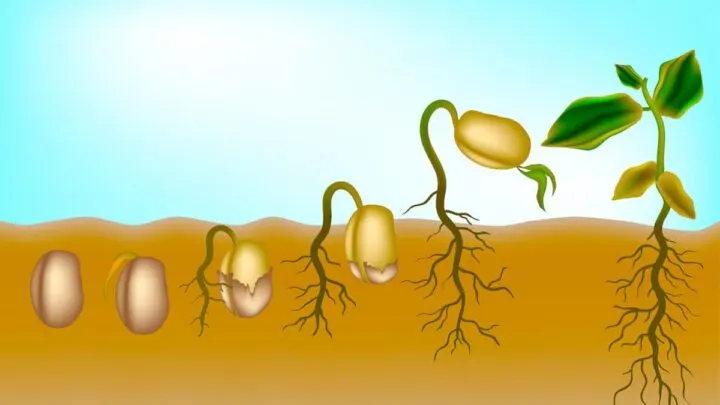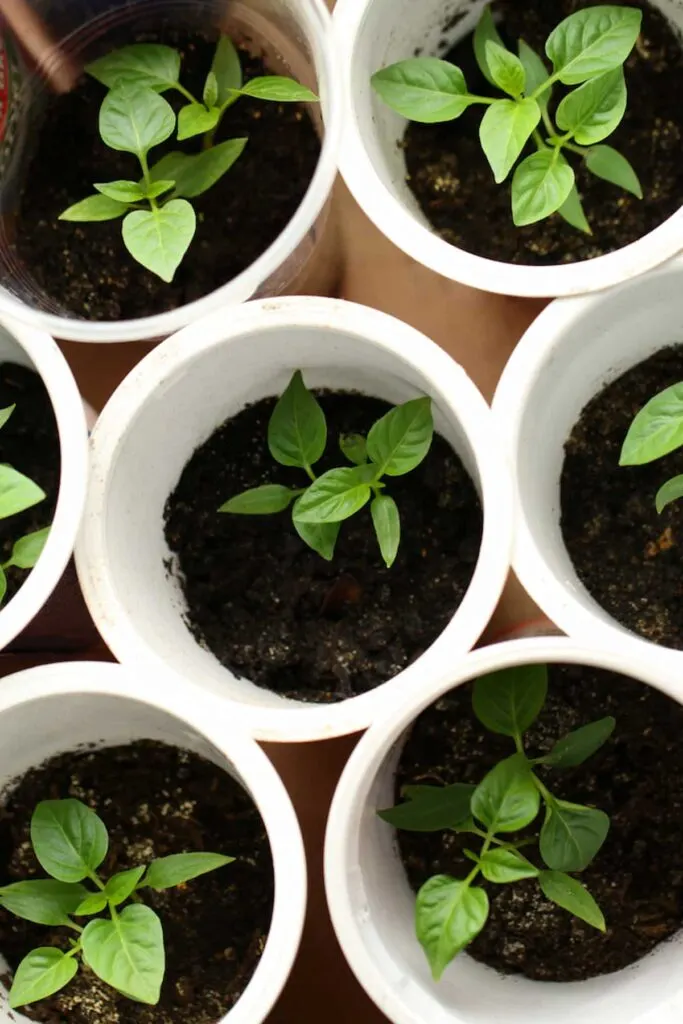Starting anything from seed can be a fun process because you get to see the whole life span of the plant and understand what it took to get the final product! The process of growing things from seed isn’t complicated, and anyone can do it with the right supplies. One of the key parts of growing anything from seeds is activating the seeds with water. But, why do seeds need to absorb water?
Seeds need to absorb water in order to germinate. Water hydrates the enzymes within a seed which helps enlarge it so it can absorb nutrients.
In the article below, we will discuss why seeds need to absorb what, what does that for the seed, what would happen without this key component, and more!

Absorbing Water Is Essential To A Successful Seed
A long scientific process explains why seeds need water to germinate. Simply put, water wakes the seeds up and hydrates the enzymes within the seed.
This hydration causes the seed to enlarge and helps the seed take in nutrients. When the seed enlarges, it will pop, and a plant will start growing! Most seeds also have a soft coating around the seed that needs to be dissolved with water for the seed to pop.
How To Germinate Seeds
Now that we know why seeds need water, the question is, how do seeds get the water they need to grow. This process, called germination, is how all plants come to be. There are ways to germinate seeds, either by germinating them in a paper towel or soil. Let’s take a look at how these methods are done.

Method Number One: Paper Towel
The main reason why people choose to germinate their seeds in a paper towel is that some swear that the seeds germinate faster and have a higher guarantee of 100% germination. Though these aren’t proven facts, some people swear by them. Follow these steps:
Step One
Get a sheet of paper towel and soak it with water. Make sure it’s wrung out so it’s not dripping.
Step Two
Place the paper towel in a clear plastic Ziploc bag.
Step Three
Places your seeds on a moist paper towel. Make sure the seeds are spread out and do not overlap each other. Zip the bag shut.
Step Four
Set the bag somewhere warm, but not in direct sunlight, as this will burn the seeds. The plastic bag with the moist paper towel will create a greenhouse effect which will help the seeds germinate in about a week.
The only real downfall to germinating seeds like this is that you must very carefully plant them in soil once they’ve sprouted. Usually, the process involves tweezers and a very steady hand.
Once the seeds have sprouted, remove them with tweezers, careful not to squeeze too hard or touch the roots (they are extremely delicate). Make a small hole in the soil where you will transplant your seeds. Plant the seeds root facing down and cover the entire seed with soil. If green growth is coming out of the seed, ensure it stays out of the soil.
Method Two: Direct Soil
Many bigger farmers and gardeners planting many plants will directly sow their seeds into the soil because this way, they can skip a step by removing it from the paper towel, etc. It is the easier method, though some say it’s not guaranteed the seeds will germinate. Here is how you can germinate your seeds directly into the soil.
Step One
Make sure you have organic loamy soil that is well draining and easy to work with.
Step Two
Make small holes in your soil. Read the seed package to see exactly how deep your hole should be and how far apart. Usually, holes should be no deeper than 1/4-1/2 an inch deep.
Step Three
Place your seeds in one seed per hole (unless directed otherwise). Cover the hole with soil, making sure not to pack the soil too hard. Sprinkle water on top of your soil and make sure the soil stays moist. Keeping your seed trays or pots in a greenhouse environment will help the seeds germinate.

Pre Soaking Seeds
When planning to plant your seeds directly into the soil, you will usually have the option to presoak your seeds. Get a jar or a cup of water and place your seeds into the water. They need to be soaked for 24 hours to work properly. Once the 24 hours is up, plant your seeds in the soil immediately and keep the soil moist.
You do not have to presoak your seeds at all; most people don’t do it. However, you may decrease your germination time b6 50 percent if you do presoak your seeds! Although sometimes, you may not see a difference in time at all. Usually, presoaking works better for larger seeds like beans, peas, or squashes.
What Happens If Seeds Don’t Have Water To Germinate?
Seeds need moisture and water to do anything at all. Nothing will happen if they do not have proper water; the seed will sit in the soil without ever sprouting. If you have planted seeds outside, they may remain dormant in the soil until it rains or until water is applied, and they may sprout surprisingly after you’ve forgotten about them.
Final Thoughts
While germinating seeds may sound intimidating, it’s perfectly easy and fun to grow your plants from seed! By either germinating your seeds with the paper towel method or directly in the soil, you have some options for getting those seeds to pop. Happy gardening!

Hi there, my name is Allie and welcome to my blog; GareningWithAllie!
Much of what you see written here is just our personal experiences with gardening. Along with the content I write here, there is also a unique collection of gardening topics covered by some of our close friends. I hope you find everything you read here to be helpful, informative, and something that can make your gardening journey the most lovely experience ever! With that said, Happy Gardening!
